It is always wise to check the power requirements of any power tool before purchase. Some stationary power tools require 240 VAC, while others require 20 or 30 amp circuits.
The following information is an overview of some of the many stationary power tools that are available. By no means is it to be considered a definitive list.
The pictures chosen are not meant to indicate a specific preference for a specific manufacturer. They were chosen, because they clearly identified the type of power tool.
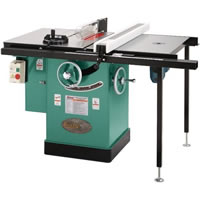 |
Selection & Prices For |
A table saw is probably the most common stationary power tool purchased by the home handy person. The most common has a 10 inch interchangeable blade. Blades are available in an assortment of teeth configurations as well as number of teeth. Blades are also available for cutting dado's and rabbits. A table saw can cut angles in lumber as well as straight cuts. The table saw is a very versatile tool and allows for the cutting of full sheets of plywood as well as much smaller pieces of material. The primary buying feature is the power of the motor. The higher the power the less possibility that lumber will bind when being cut. Accessories include tabletop extensions, lights and dust collectors. Also see the Guide For Selecting Circular Saw Blades. |
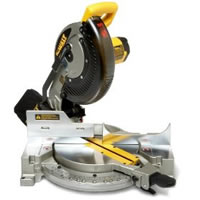 |
Selection & Prices For Miter Saws |
An excellent tool for cutting moldings and other lengths of lumber. Miter saws can also be used to conveniently cut PVC pipe. The miter saw conveniently cuts all angles on lumber for ease of joining and acts as a chop saw for smaller materials. The most common miter saw will have a 10 inch blade, although units are available with 12 inch blades for thicker lumber. A 10 inch blade will conveniently cut a 2 x 4 on a 45 degree angle. The size of the motor is the key buying feature. Accessories include laser sites, dust collectors and compound angle cutting. Also see the Guide For Selecting Circular Saw Blades. |
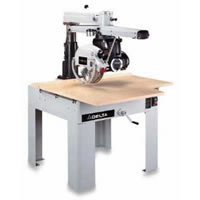 |
Selection & Prices For Radial Arm Saws |
A radial arm saw is an excellent do it all type of tool. With extension tables it can easily cut a 4' x 8' piece of plywood, while the saw is designed to act as a compound angle cutter, in the same manner as a chop saw. It can also be used as a horizontal drill. Standard blade size is 10" but 12" units are not uncommon. If you can only afford one power tool and undertake projects from fine cabinetry to rough construction, the radial arm saw is the power tool I would recommend. Accessories include drill chucks, dust collectors, sanding disks and wheels, lights, and laser sites. Also see the Guide For Selecting Circular Saw Blades. |
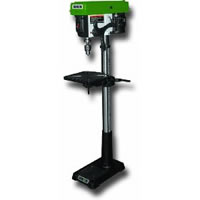 |
Selection & Prices For Drill Presses |
A drill press is one of those nice power tools to own. A drill press allows for the convenient drilling of holes and can be converted to a stationary drum sander. Options include adjustable tables for angle hole drilling, lights and dust collectors. The drill press is usually specified by motor size and the size of the chuck opening. Drill presses are also available to mount on work benches. |
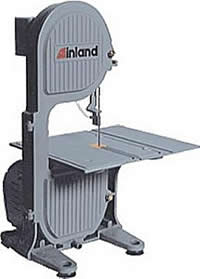 |
Selection & Prices For Band Saws |
Originally designed for cutting carcasses of meat, the band saw has become a valuable tool in the home shop. No other tool allows for the convenient cutting of thick lumber or the cutting of lumber with random curves. Size of motor in horsepower and the width of the saw blade are the features that determine which unit to purchase. Options include lights and dust collectors. |
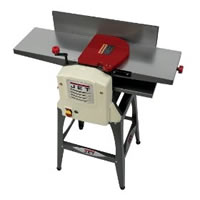 |
Selection & Prices For Jointers |
A must power tool for furniture building. The jointer is the only power tool than can produce a true 90 degree edge. The jointer's primary feature is its bed - most common being 4 and 6 inch. However, 10 inch beds are not uncommon. Options include a tilting table allowing for very accurate angles on the edges of boards. |
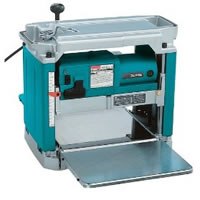 |
Selection & Prices For Planers |
A power planer is the only shop tool that will allow you to mill a board's thickness. A very important power tool if you are creating furniture or small wood working projects such as jewelry boxes. The planer is sold based on the power of its motor and the width of its bed. The bed width determines the widest board that can be planed to thickness. Options include dust collection. |
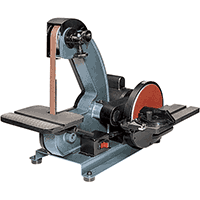 |
Selection & Prices For Sanders |
A sanding station has many benefits if you are creating furniture or other fine pieces of work. Sanding stations usually include both a belt and disc sander. The belt sander is usually mounted in a vertical plane and the work is fed into the machine. Many home handymen will create there own sanding station using a drill strapped to a work bench as the disc sander and a belt sander mounted in a horizontal position. If you have the space available a sanding station is an invaluable asset to your home workshop. |
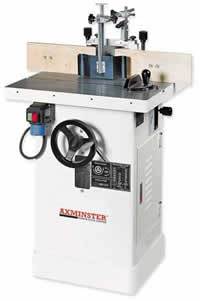 |
Selection & Prices For Shapers |
A shaper is a router, turned upside down. The shaper creates moldings, rabbits and dados in lumber. It has mush more power than a router and because it is stationary it is easy to duplicate moldings over and over again. The blades for a shaper are generally larger than those used in a router. It is not a common home shop tool unless one is into making furniture or a lot of detailed type projects. Options include lights and dust collectors. An alternative to a shaper is to use a router table and mount the router upside down. However, there are many more molding bits available for a shaper than for a router. |
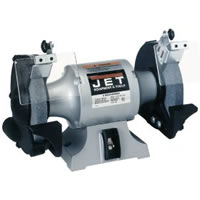 |
Selection & Prices For Bench Grinders |
A grinder is one of those shop tools that few people consider, yet having one has numerous advantages. A grinder can be used to sharpen the blades of many other tools as well as shaping metal and plastics. Motor size and grinding wheel diameter are the key features of a grinder. Options include dust collectors, lights and swivel tables, which allow for the convenient grinding of angles. Numerous types of grinding stones are available, in size, material and diameter. |
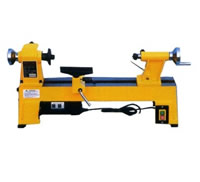 |
Selection & Prices For Wood Lathe |
A lathe is an important power tool for those involved in furniture and the making of round objects from wood. The lathe is a machine that turns the wood piece horizontally while the operator uses chisels to shape the wood material in whatever pattern desired. The lathe is not a common home shop tool, it is unique in its function. Wood lathes are sold based on their bed length and the height of the spindle from the bed. The larger the bed, the longer the piece of wood that can be turned. The height of the spindle determines the larges diameter of wood that can be turned. Options include dust collectors and lights. Using a lathe requires skill only obtained by practice. It may be noted that the sharpness and quality of the chisels used are a large determining factor in the quality of the finished item. |
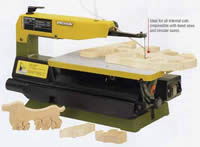 |
Selection & Prices For Scroll Saws |
A scroll saw is a stationary fine, thin bladed saw that allows the operator to cut intricate details in relatively thin pieces of lumber, usually 1/2 inch or less. Table size is usually the determining factor in the choice of a scroll saw. The advantage of a scroll saw over a band saw is that as the blade is much finer and thinner very intricate patterns can be cut. The other advantage of a scroll saw is that the blade can be started in the center of a piece of material, by drilling a hole and mounting the blade through the hole. Options include lights and dust collection. |
The best selection and prices on stationary power tools
